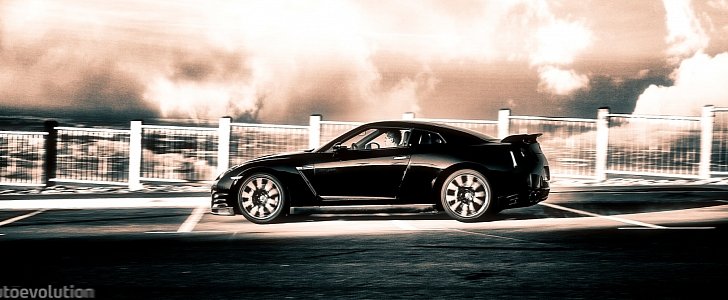While many believed the 2015 Nissan GT-R Nismo to be the penultimate update for the current R35 generation, Nissan is determined to further develop Godzilla until a new generation arrives. Nissan’s Chief Creative Officer, Shiro Nakamura, used the past weekend’s Le Mans race to talk about the company’s flagship.
While confirming the 2016 update will arrive shortly, Nakamura made it clear the next-generation model is “more than two years away”. The exec talked to Car Advice, being open about the development efforts. Thus, the rumors stating the next GT-R will land in 2016 as a 2017 model now belong in the recycle bin.
This means we will probably get a new update next year as a 2017 model, while the all-new GT-R could arrive in late 2017 or early 2018. We mustn’t forget the R35 was introduced in Japan back in 2007, while the rest of the world got it one year after that.
Nevertheless, Nissan is keen on taking the handling even further. In addition, the GT-R’s interior quality should also be improved, bringing it closer to its more expensive supercar rivals.
““I think we’re better to continue to make evolution of today’s [car] rather than switching to something completely different. Nissan GT-R LM Nismo is not a production car but it is inspired by GT-R and also to give us inspiration for future GT-R.”
The executive hasn’t confirmed the tons of speculation pointing towards a hybrid powertrain for the next GT-R. He explained the company is “still in the process of experimenting”. Still, with the industry and the racing trends sticking to adding electric power, choosing a different path seems highly unlikely.
Yes, having everything on the front brought issues that ultimately shattered the 24-hour dream, stuff like the front brakes overheating, but this means Nissan now knows the subtleties of packing more power on the front axle. Will they use the harsh lessons for future road car development? Certainly.
This means we will probably get a new update next year as a 2017 model, while the all-new GT-R could arrive in late 2017 or early 2018. We mustn’t forget the R35 was introduced in Japan back in 2007, while the rest of the world got it one year after that.
The 2016 GT-R details
As for what the 2016 GT-R will bring, the executive hinted this won’t be one of those model year upgrades that improve straight line performance. With a 0 to 62 MPH of around 2.7 seconds, it’s hard to argue with that.Nevertheless, Nissan is keen on taking the handling even further. In addition, the GT-R’s interior quality should also be improved, bringing it closer to its more expensive supercar rivals.
Next-generation plans
Nakamura said the next incarnation of the model won’t bring a radical change, while obviously reinforcing the idea that the GT-R LM Nismo lessons will be applied in the development process.““I think we’re better to continue to make evolution of today’s [car] rather than switching to something completely different. Nissan GT-R LM Nismo is not a production car but it is inspired by GT-R and also to give us inspiration for future GT-R.”
The executive hasn’t confirmed the tons of speculation pointing towards a hybrid powertrain for the next GT-R. He explained the company is “still in the process of experimenting”. Still, with the industry and the racing trends sticking to adding electric power, choosing a different path seems highly unlikely.
Speaking of Nissan’s Le Mans race in 2015
Nissan’s front-wheel-drive bet may have failed them at Le Mans, but we have to understand what they’re aiming for. You see, Nissan wasn’t going to win the race (not with Porsche and Audi battling for the podium) and so they decided to make the most out of the development opportunities such a motorsport program brings.Yes, having everything on the front brought issues that ultimately shattered the 24-hour dream, stuff like the front brakes overheating, but this means Nissan now knows the subtleties of packing more power on the front axle. Will they use the harsh lessons for future road car development? Certainly.

